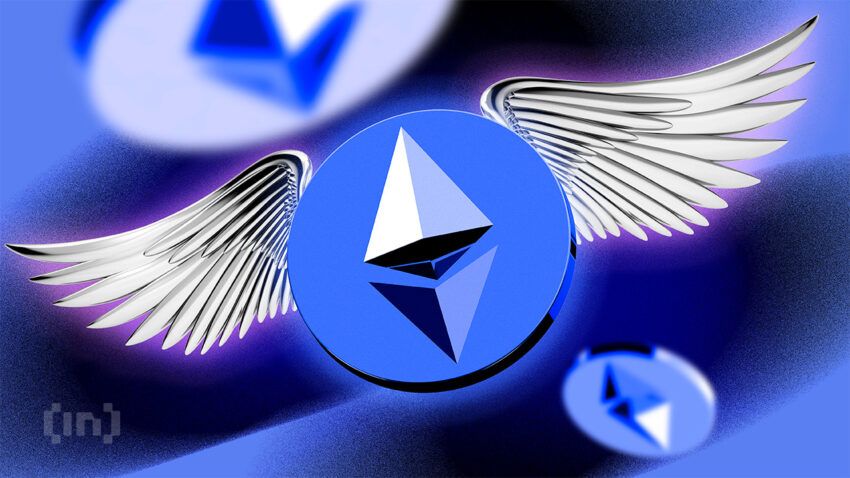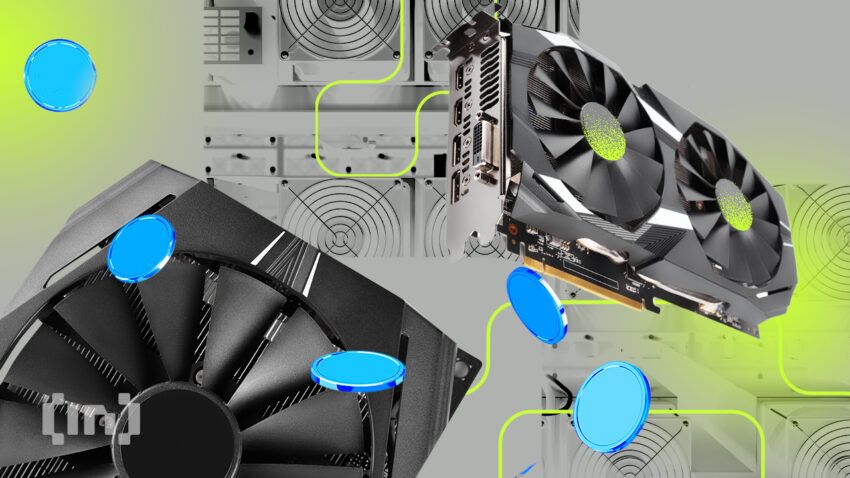Is it still profitable to mine Ethereum?

Before getting into how, it’s smart to consider if mining Ethereum is still profitable. The short answer is yes, it is still profitable to mine Ethereum forks.
However, the canonical Ethereum (Eth2) is now proof-of-stake (PoS). Therefore, it is not possible to mine Ethereum. It is possible to mine Ethereum forks such as Ethereum Classic (ECH) and Ethereum PoW (ETHW).
The rewards and income for ETC has remained relatively stable over a period of time. Stability in rewards and income is a positive sign for miners, as it suggests predictability in earnings from mining activities.
The ETC price in the image below shows some fluctuation. The profitability of mining is directly influenced by the price of ETC; higher prices can increase profitability if the mining difficulty remains constant or doesn’t increase at the same rate as the price.
This coupled with the block reward of 2.56 ETC, a current price of about $25, and 13 second block times, ETC is still relatively profitable.

Of course, if you decide to mine the forks you’d still need a powerful GPU, as well as the ability to pay a higher electricity bill.
But if you can do both of these things, you’ll find a rather cheap way to get involved with Ethereum in mining. Also, expenses vary based on mining pool fees, your current hash rate, how much you need to upgrade your parts, and, as mentioned, electricity costs.
However, if you already have a powerful gaming PC, for instance, you’re already pretty much there. Utilize an Ethereum mining profitability calculator to simulate scenarios, and figure out if you’d qualify for profitable Ethereum mining.
Why mine Ethereum forks?
There are various reasons to get involved with mining Ethereum forks. For one, you can profit by bringing more ETH into the network, earning rewards for doing so.
On top of this, if you’re an Ethereum diehard, you’re supporting the network and even earn governance rights for participating. You’re also increasing the blockchain’s security, decentralizing it more in the process.
Plus, participating in a network with thousands of others, knowing you’re doing a good service for all of its users, gives one a pretty good feeling!
Is it easy to mine Ethereum forks?
Mining Ethereum forks isn’t difficult. You simply link your computer to some mining software, and let it utilize power to solve complex algorithms. However, there is a bit of a barrier to entry.
As mentioned, you’d need a powerful GPU or CPU, though it is advised to use the former. If possible, you should acquire an ASIC – basically a mining-focused GPU.
However, these are quite expensive and not recommended for beginners. When choosing a GPU, make sure it’s one with decent processing power and video RAM. The more you have, the faster mining will be.
That said, it’s important to factor in your budget when deciding. That could make the difference between a profitable mining experience, or one you’re just sinking money into.
Mine Bitcoin for free on StormGain’s Mining App
Get Access to StormGain Now!,
You’d also need a reliable internet connection in order to even think of making any profits. If you consider those difficulties, then no, it’s not as easy as one may think. However, if you’re able to acquire these parts of the puzzle, you’re ready for the final step.
How to start mining Ethereum for profit

If you’re okay with the previous requirements, and are still wondering, “Can I mine Ethereum on my PC?,” we’ve got you covered.
Those new to the mining space will generally want to start with a mining pool. As you may know, individual mining isn’t very profitable. Solo miners will compete against thousands of others around the world, likely with incredibly powerful setups or even mining farms. It’s possible to never get a reward, depending on how lucky or unlucky you are.
A mining pool streamlines the process a bit. It literally pools together tons of miners, all targeting one block at a time. Once the block is mined, that reward is distributed to each miner in the pool, based on their level of contribution.
These terms vary based on your pool of choice, which is important to keep in mind while searching. That’s not to mention there are some fees to pay depending on the pool, but at least you’ll be getting rewards.

How to set up mining rigs
Once your PC is set up, you’ll want to download the latest drivers. This can be done with AMD GPUs via their website, or NVIDIA cards via GeForce Experience. Then, you’ll need to download a client to access and interact with the Ethereum network. Examples of software include CoreGeth and Hyperledger Besu.
A mining software should come with a cryptocurrency wallet for storing your ETH, but double-check to make sure. Either way, you’ll probably want to move your rewards to an external wallet like MyEtherwallet or Metamask for safekeeping.
When your wallet is established, the software will begin to download the entire blockchain. This may take a little while, so be patient. Also, make sure you have some extra hard drive space for it.
If you’ve been wondering how to solo mine Ethereum forks, you’re basically ready. However, considering you won’t profit from this unless you have dozens of GPUs, it’s time to download a mining pool. F2Pool and 2Miners are good to start with. These platforms will provide setup instructions once installed.
Also, make sure to find BAT files compatible with your miner of choice, generally stored on its website. These offer pre-made settings for you to start mining on specific pools. Once everything is downloaded and open, double-click on the BAT file and the mining will begin.
If you ever want to check how your mining is going, simply head to your mining pool’s website and input your wallet address. It should give you all the relevant information. Otherwise, the process is complete! Your wallet will automatically fill with ETH once reaching the pool’s required threshold.
How long does it take to mine 1 ETH?
According to Minerstat, it takes around 4 days for one Jasminer X4 Server mine a single ETC. On the other hand, It would take a little less than a week to mine 1 ETHW with the Antminer E9 Pro.
Of course, these number is increase as more miners join networks, meaning a ton of ETH is released into the network every day. This stat is bound to change as mining difficulty increases as well.
Cloud mining Ethereum for Profit

While traditional mining is the more popular way to go, there’s also the possibility of cloud mining. This is doable for users who can’t afford expensive computer parts or simply don’t have access to them. As you can imagine, this works a little different than normal mining.
Cloud mining involves users investing in a mining company. That company takes those funds and converts them to hash power, repaying the user for how much they’ve invested. Of course, those funds you invest in are used for upkeep, buying new hardware, and more.
That said, there are lots of cloud mining scams out there. Be very careful which one you choose, and do in-depth research before picking one.
Otherwise, the concept of cloud mining is a fantastic idea, allowing anyone to enjoy mining and profit from it. Cryptocurrency trading platform StormGain allows customers to mine Bitcoin on any device without investing in hardware or paying contract fees.
Mining Ethereum on mobile
While it’s technically possible to mine Ethereum on your mobile device, it isn’t worth the effort. Additionally, mining apps have been banned by Google for some time now, and phones generally aren’t as powerful as computers for doing so. There are ways to cloud mine on your mobile device, but it’s important to do extensive research before doing so.
Keeping the spirit of proof of work Ethereum
Mining Ethereum forks is a way to continue to profit from Ethereum. Now you’re aware of the barriers in the way of Ethereum mining, as well as the easiest ways to get involved and start profiting. Be careful out there, and happy mining!
Frequently asked questions
No, it is not possible to mine the canonical Ethereum proof-of-stake (PoS). However, it is possible to mine Ethereum forks like ETH Classic or Ethereum PoW. The profitability of each will vary depending on the complexities of mining each coin.
Ethereum Classic is a hard fork that arouse out of the controversy of the DAO hack. It was created in 2016 by a group of developers that did not want to rollback the history of the blockchain after the exploit. It has virtually the same functionality as canonical Ethereum, being a smart contract platform.
Ethereum PoW stands for Ethereum proof-of-work (PoW). It is an Ethereum fork that came to be after the Merge in September 2022. The Merge was the network upgrade that transitioned canonical Ethereum to proof-of-stake. In an attempt to keep mining Ethereum, a group of developers forked the network so that their mining operations would not become unprofitable altogether.
Ethereum’s proof of stake (PoS) aims to replaced the proof of work (PoW) system used for transaction validation. In PoS, validators are chosen to create new blocks and secure the network based on the number of coins they “stake” or lock up as collateral. The transition to PoS is was implemented to address scalability, energy efficiency, and security concerns associated with PoW.
The Ethereum 2.0 upgrade is a major network overhaul designed to implement the transition from PoW to PoS. It is often referred to as The Merge. The Merge was completed on September 15, 2022.
To become a validator in Ethereum’s PoS system, users need to stake a certain amount of ETH as collateral on the Beacon Chain. The exact amount of ETH required to become a validator is currently 32 ETH. Once staked, the ETH cannot be freely withdrawn for a specific period, and validators are responsible for proposing and validating new blocks.
Disclaimer
In line with the Trust Project guidelines, the educational content on this website is offered in good faith and for general information purposes only. BeInCrypto prioritizes providing high-quality information, taking the time to research and create informative content for readers. While partners may reward the company with commissions for placements in articles, these commissions do not influence the unbiased, honest, and helpful content creation process. Any action taken by the reader based on this information is strictly at their own risk. Please note that our Terms and Conditions, Privacy Policy, and Disclaimers have been updated.




